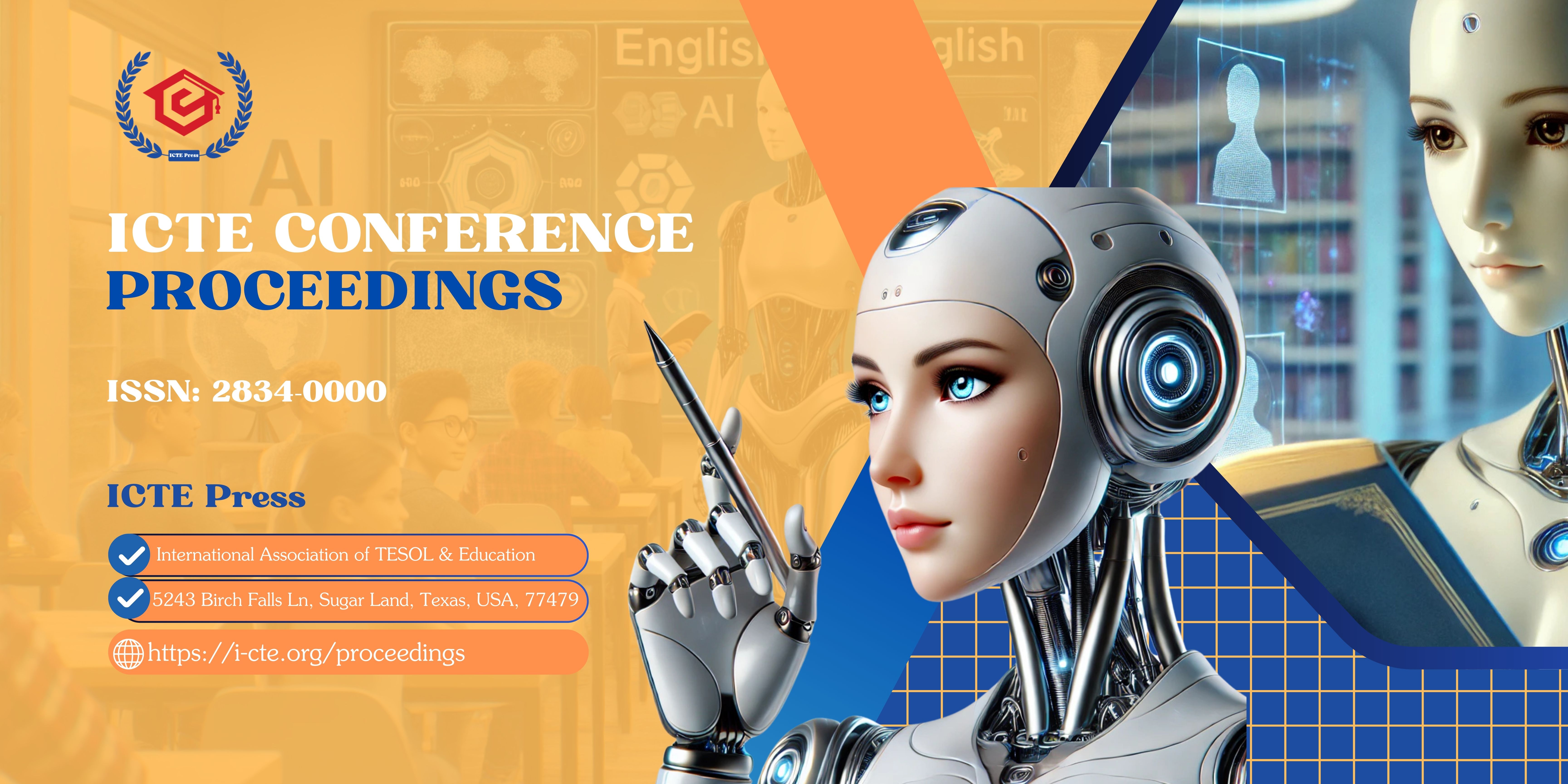Conceptual Metaphor “WOMEN ARE ANIMALS” In 20th-century Vietnamese Literature
DOI:
https://doi.org/10.54855/ictep.2333Keywords:
conceptual metaphors, Vietnamese literature, women, animals, the mapping mechanismAbstract
From the perspective of Cognitive Linguistics, the paper analyzes the conceptual metaphor WOMEN ARE ANIMALS in 20th-century Vietnamese literary works. The theoretical framework for this study includes the Conceptual Metaphor Theory of Lakoff and Johnson (1980), the Great Chain of Being model of Lakoff and Turner (1989), and the Metaphor Identification Procedure of Pragglejaz Group (2007). Through a survey of 50 short stories and novels written by famous Vietnamese authors, 6 low-level metaphors as well as the mapping mechanism from the source domain to the target domain, is discovered and explained. The findings reveal that women are mainly portrayed as wild animals, livestock, pets, or birds. Metaphorical linguistic expressions, then, convey a biased view towards the low and inferior role and position of women in the family and society. Negative ideological values in the representation of women are explored to show that women are considered to be small, weak, dependent on men, and serve as their recreation. Vietnamese people's thinking and cultural characteristics are also reflected in this metaphor.
References
Ahmed, U. (2018). Gender in media discourse, The discursive construction of gender in Nigerian newspapers. LIT.
Anh, D. (1966). Hòn đất, Retrieved March, 15, 2020 from https://isach.info/story.php?story=hon_dat__anh_duc&chapter=0004
Barasa, M. N., Opande, I. N. (2017). The use of animal metaphors in the representation of women in Bukusu and Gusii proverbs in Kenya. Africology: The Journal of Pan African Studies, 10(2), 82-108.
Chin, J. S. K. (2009). Are women nothing more than their body parts? Obscene and indecent metaphors used to describe women in a Hong Kong magazine. LCOM Papers 2, 17–30.
Duong, H. (1991). Bến không chồng. Hai Phong Publishing House.
Hoang, P. (Ed.) (2010). Từ điển tiếng Việt, Vietnam Encyclopedia Publishing House.
Khai, H. & Nhat, L. (1934). Đời mưa gió. Today Publishing House.
Kövecses, Z. (2000). Metaphor and Emotion: Language, Culture, and Body in Human Feeling. Cambridge: Cambridge University Press.
Kövecses, Z. (2002, 2010). Metaphor: A practical introduction. Oxford: Oxford University Press.
Kövecses, Z. (2005). Metaphor in Culture: Universality and Variation. Cambridge: Cambridge University Press.
Lakoff, G. (1986). Classifiers as a reflection of mind. In Craig (Ed.), Noun classes and categorization (pp.13–52). Amsterdam: John Benjamins.
Lakoff, G. & Johnson, M. (1980, 2003). Metaphors we live by. Chicago: University of Chicago Press.
Lakoff, G. & Turner, M. (1989). More than Cool Reason: A Field Guide to Poetic Metaphor. Chicago: University of Chicago Press.
Le, L.T. (2017). Ẩn dụ ý niệm về vẻ đẹp ngoại hình của con người trong tiếng Việt. Journal of Inquiry into Languages and Cultures, 1(3), 85-94.
López-Rodríguez, I. (2007). The representation of women in teenage and women's magazines: metaphors in English. Estudios Ingleses de la Universidad Complutense, 15 – 42.
López-Rodríguez, I. (2009). Of women, bitches, chickens and vixens: Animal metaphors for women in English and Spanish. Culture, Language and Representation, 7(7), 77-100.
Luong, N.K.P. (2016). Ẩn dụ ý niệm về phụ nữ trong tiếng Việt. [Master Thesis, Ho Chi Minh City University of Education].
Ma, V.K. (1985). Mùa lá rụng trong vườn, Retrieved March 16, 2020, from https://vietmessenger.com/books/?title=mua%20la%20rung%20trong%20vuon
Nam, C. (1941). Chí Phèo. In Nam, C. (Ed.) (2002), Tuyển tập Nam Cao (pp.24-47). Literature Publishing House.
Nam, C. (1942). Trẻ con không được ăn thịt chó. In Nam, C. (Ed.) (2002), Tuyển tập Nam Cao (pp.96-105), Literature Publishing House.
Nam, C. (1943a). Một bữa no. In Nam, C. (Ed.) (2002), Tuyển tập Nam Cao (pp.187-194), Literature Publishing House.
Nam, C. (1943b). Ở hiền. In Nam, C. (Ed.) (2002), Tuyển tập Nam Cao (pp.105-202), Literature Publishing House.
Nam, C. (1944). Sống mòn. In Nam, C. (Ed.) (2002), Tuyển tập Nam Cao (pp.461-637). Literature Publishing House.
Ngo, T.T. Cô Tây Hoẻn. Retrieved November, 8, 2019 from https://vietmessenger.com/books/?title=tap%20van&page=20
Nguyen, H. (1937). Bỉ vỏ. Retrieved November 9, 2019, from https://isach.info/story.php?story=bi_vo__nguyen_hong&chapter=0015
Partridge, E. (1993). Shakespeare’s Bawdy (2nd ed.). London: Routledge.
Pham, T.N.L. (1998). Nhân cách. In Thai, H. (1999), Truyện ngắn hay 1999 (pp.249-270), Thanh Hoa Publishing House.
Takada, M., Shinohara, K., Morizumi, F., Sato, M. (2000). A study of metaphorical mapping involving socio-cultural values: How woman is conceptualized in Japanese?. In Kawamori, M. & Ikeya, A. (2000), Proceedings of the 14th Pacific Asia Conference on Language, Information and Computation (pp.301-312). Waseda University International Conference Center, Tokyo, Japan.
Talebinejad, M. & Dastjerdi, H. (2005). A cross-cultural study of animal metaphors: When owls are not wise!”. Metaphor and Symbol, 20:133-150.
Tarkela, M. (2016). “Being All BITCH BITCH BITCH Pms Pms BITCH BITCH BITCH” – Conceptual metaphors describing women on Seventeen.com and Cosmopolitan.com. [Pro Gradu Thesis, University of Helsinki].
Turpín, E. (2014). A critical study of the Women are animals conceptual metaphor. Conference paper, Trabajo fin de grado, University of Murcia, 1.
Vo, T.H. (1993). Người đàn ông duy nhất. In Doan, A.D. (Ed.) (2015), 20 Truyện ngắn nữ đặc sắc Việt Nam từ 1986 đến nay (pp.170-179), Women Publishing House.
Vu, T.P. (1934). Kỹ nghệ lấy Tây. Retrieved October, 7, 2019 from https://www.sachhayonline.com/tua-sach/ky-nghe-lay-tay/chuong-7-ai-muon-hoa-ra-su-tu/695
Vu, T.P. (1936). Giông tố. https://vietmessenger.com/books/?title=gong%20to
Vu, T.P. (1936b, republished 2005). Làm đĩ. Literature Publishing House.
Y, B. (1989). Bức thư gửi mẹ Âu Cơ. Retrieved April, 1, 2020 from https://dembuon.vn/threads/buc-thu-gui-me-au-co-y-ban.6269/
Zhou, Y. (2017). Cultural Gender Metaphors in Modern Chinese Fiction. Language and Cognitive Science, 3(1), 1-40.
Downloads
Published
How to Cite
Issue
Section
License
Copyright (c) 2023 Pham Thuy Giang

This work is licensed under a Creative Commons Attribution 4.0 International License.
Authors retain copyright and grant the picte the right of first publication with the work simultaneously licensed under a Creative Commons Attribution 4.0 International License that allows others to share the work with an acknowledgment of the work's authorship and initial publication in this journal.
Authors are able to enter into separate, additional contractual arrangements for the non-exclusive distribution of the proceedings' published version of the work (e.g., post it to an institutional repository, in a journal, or publish it in a book), with an acknowledgment of its initial publication in this proceedings.
Authors are permitted and encouraged to post their work online (e.g., in institutional repositories or on their website) prior to and during the submission process.










